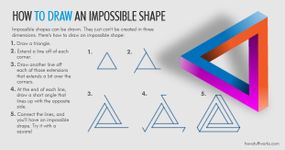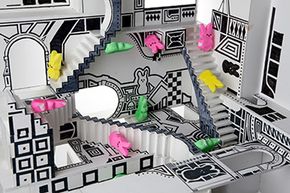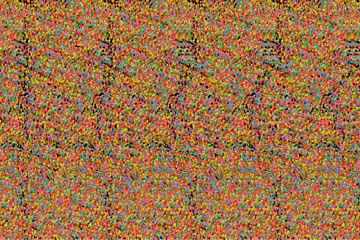Four of the most well-known impossible shapes are the Penrose triangle, Penrose stairway, Freemish crate and the impossible trident [source: The Worlds of David Darling]. The Penrose triangle, aka the tribar, is named after physicist Roger Penrose. Penrose didn't create it — that was the work of a Swedish artist named Oscar Reutersvärd, who made it out of a set of cubes in 1934. But after Penrose published a drawing of the triangle in a 1958 article in the British Journal of Psychology, which he co-wrote with his father, Lionel, it became very popular. In 1982, the Penrose triangle appeared on a Swedish postage stamp to honor native son Reutersvärd [source: New World Encyclopedia].
The Penrose stairway is a staircase that makes four 90-degree turns. When you first glance at it, it looks like a staircase that runs in a square. Odd, yes, but still a traditional set of stairs you can climb. But when you look more closely and imagine yourself walking on it, you quickly see no matter how many times you climb the stairs in that square, up or down, you never get any higher or lower — or anywhere, for that matter! The Penrose men also published a drawing of this stairway in their 1958 paper [sources: Harshbarger, BrainDen].
The Freemish crate first appeared in the 1958 lithograph "Belvedere," created by Dutch artist M.C. Escher. A man is sitting on a bench, holding the crate; the bench sits at the base of an enormous structure. The crate is also known as Escher's cube or Hyzer's illusion [source: Wolfram MathWorld].
The impossible trident is known by numerous other names: ambiguous trident, blivet, devil's pitchfork, hole location gauge, Schuster's Conundrum, three-pronged poiuyt, three-legged widget and two-pronged trident [sources: BrainDen, New World Encyclopedia]. The object appears to have three cylindrical prongs when viewed in one manner, but also two rectangular prongs when viewed in another direction. No one knows for sure who invented the blivet. What's known is that it was published in several periodicals (aviation, engineering and science fiction) in May and June of 1964, as well as a 1964 article by D.H. Schuster in the American Journal of Psychology — hence the name "Schuster's Conundrum" [source: New World Encyclopedia].




